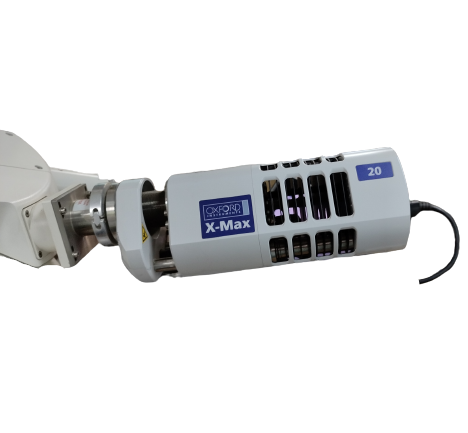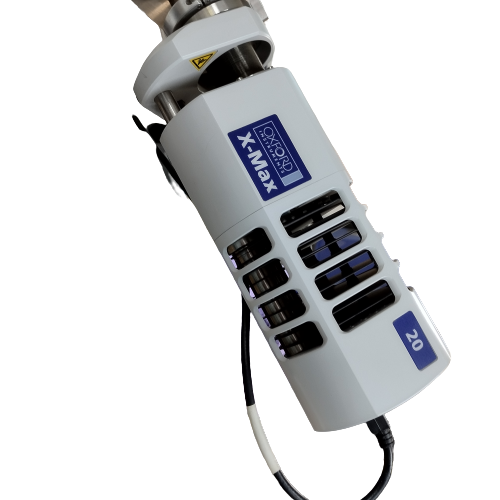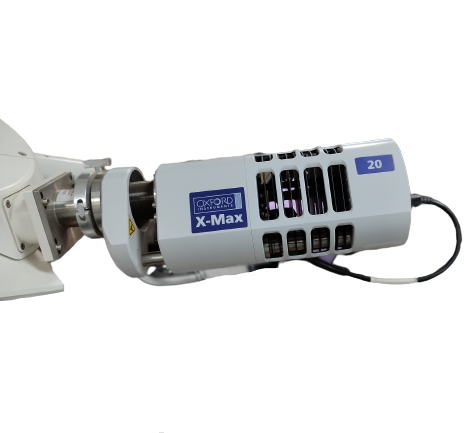Model
Oxford X-MAX 20
Features
EDS (Energy Dispersive Spectroscopy) is a powerful tool used in conjunction with SEM (Scanning Electron Microscopy), TEM (Transmission Electron Microscopy), or FIB (Focused Ion Beam) for elemental and chemical analysis of samples. It helps in identifying and quantifying the elemental composition of materials at the micro- and nanoscale.
Applications
1. Materials Science
- Phase Identification: EDS/EDX can identify different phases in alloys, ceramics, and composites by analyzing the elemental composition.
- Failure Analysis: Detects impurities or unexpected elements that might cause material failures in metals, polymers, or ceramics.
- Microstructural Analysis: Studies grain boundaries, inclusions, and other microstructural features to understand material properties.
2. Semiconductor Industry
- Dopant Distribution: EDS/EDX is used to map the distribution of dopants in semiconductor devices, ensuring proper function.
- Contamination Analysis: Identifies contaminants on semiconductor wafers that could impact device performance.
- Thin Film Analysis: Analyzes the composition of thin films and interfaces in electronic components.
3. Nanotechnology
- Nanomaterial Characterization: Provides elemental analysis of nanoparticles, nanowires, and other nanostructures, crucial for understanding their properties.
- Catalysis Research: Analyzes the composition and distribution of catalytic materials at the nanoscale.
4. Geology and Mineralogy
- Mineral Identification: Identifies minerals based on their elemental composition, aiding in geological surveys and exploration.
- Petrography: Used in the study of rock samples to determine the elemental makeup and history of formation.
- Environmental Studies: Analyzes soil and sediment samples to identify pollutants and trace elements.
5. Biological and Medical Research
- Elemental Mapping in Biological Samples: Used to study the distribution of elements in tissues, cells, and biological materials.
- Bone and Tissue Analysis: Helps in understanding the elemental composition of bones and tissues, crucial for medical diagnostics and research.
- Pharmaceuticals: Analyzes the composition of drug formulations and identifies contaminants.
6. Archaeology and Art Conservation
- Artifact Analysis: Determines the elemental composition of historical artifacts, helping in authentication and understanding ancient manufacturing techniques.
- Conservation Efforts: Analyzes the composition of pigments, metals, and other materials in art and artifacts to guide preservation efforts.
7. Forensic Science
- Trace Evidence Analysis: Identifies and quantifies elements in trace evidence like gunshot residues, glass fragments, or paint chips, aiding criminal investigations.
- Failure and Accident Investigation: Used to analyze materials involved in accidents, helping to determine causes.
8. Industrial Applications
- Quality Control: Ensures the consistency and quality of materials in manufacturing processes.
- Corrosion Studies: Analyzes corroded materials to determine the elements involved, helping to prevent future corrosion issues.
Handled By Mr. Sagar Patail
sagarpatail@iiti.ac.in




